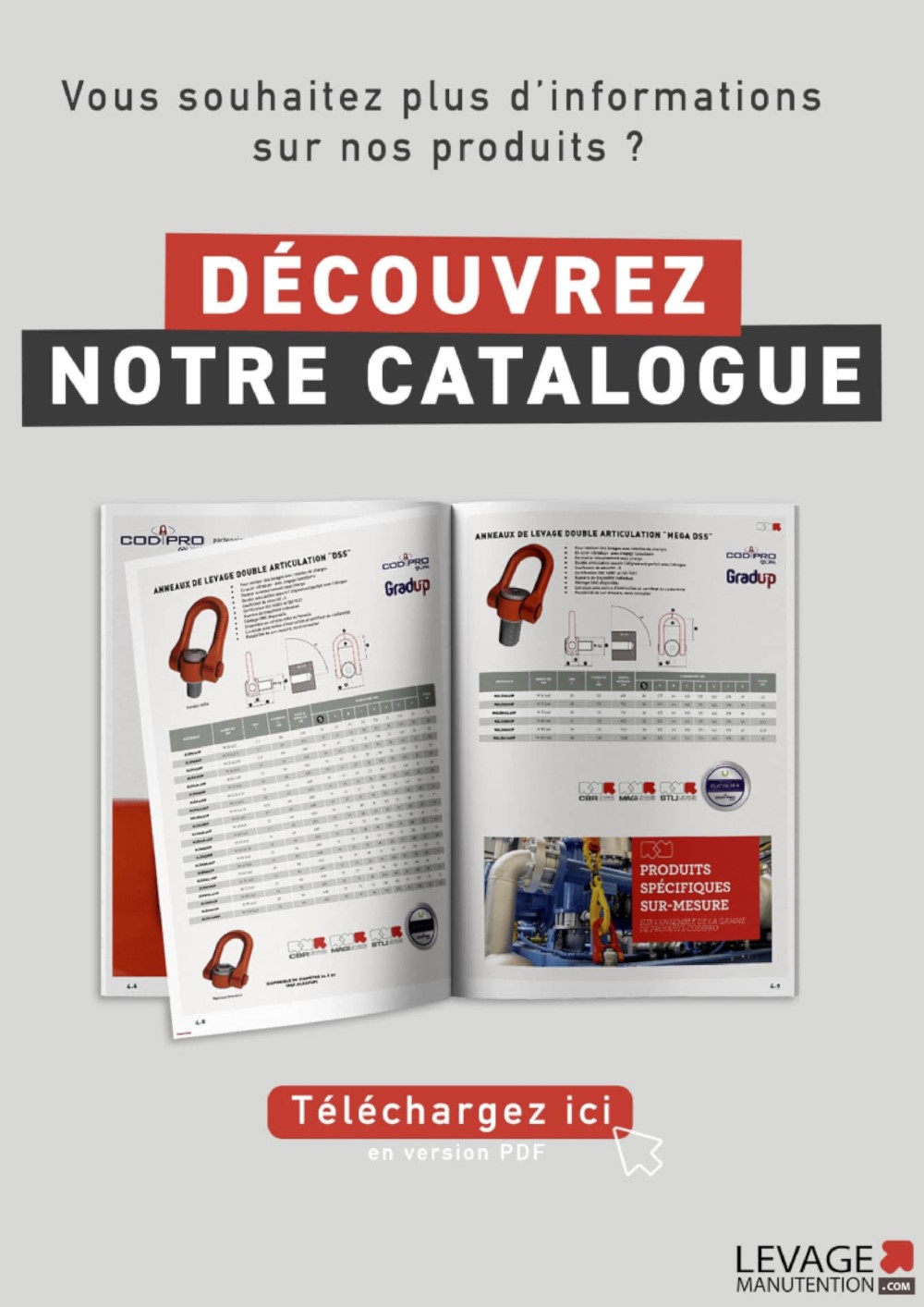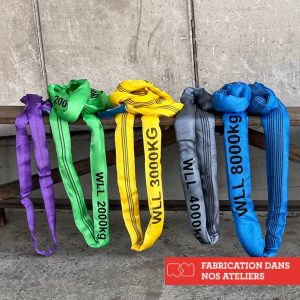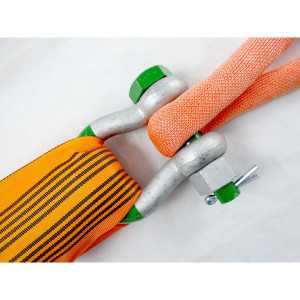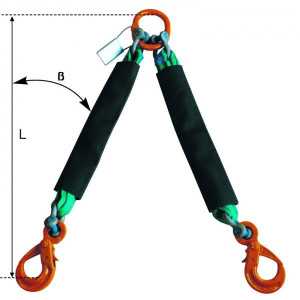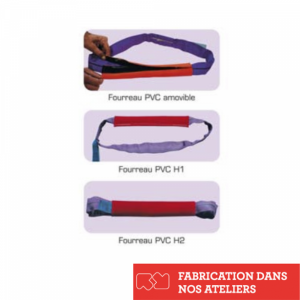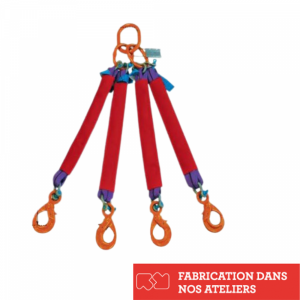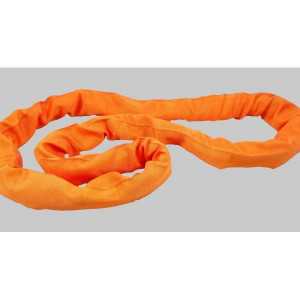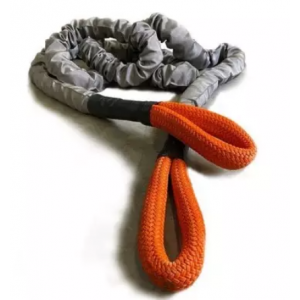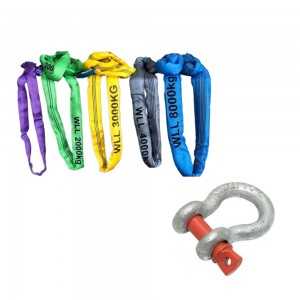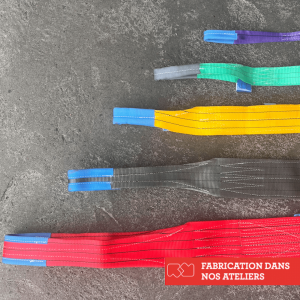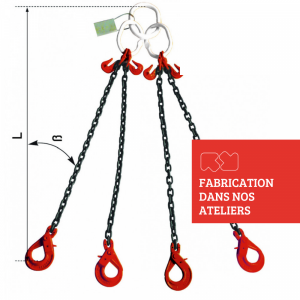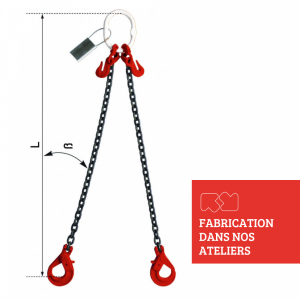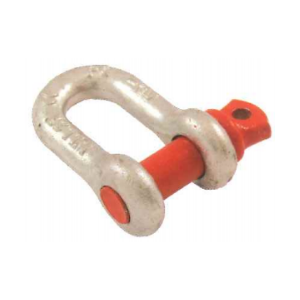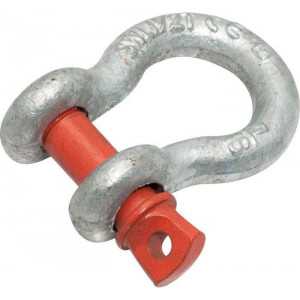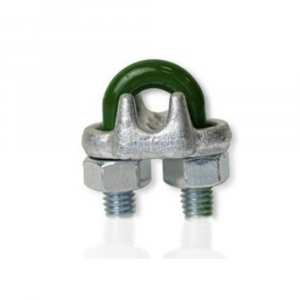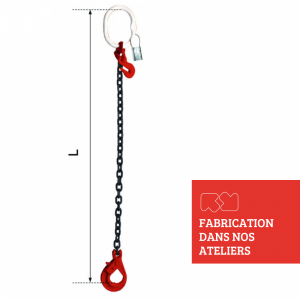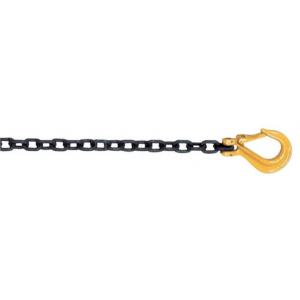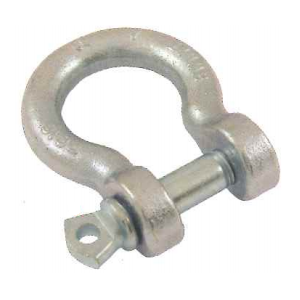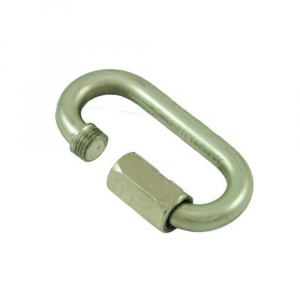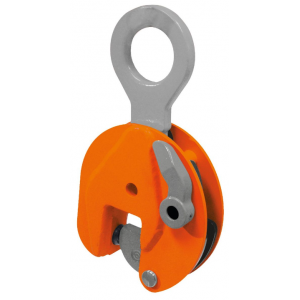TEXTILE ROUND SLINGS
What is a textile round sling?
Textile round slings consist of a core (one or more threads wound together to form an endless skein). This skein is inserted into a sheath of the same base material as the core. Round slings are suitable for lifting cylindrical or rounded loads such as steel pipes or boats. Round slings have the special feature of being sewn together to fold back on themselves to create endless round slings. These slings have the particularity of having a low weight which makes them easy to handle and transport.
How to identify round slings ?
Round textile slings can be identified by means of a label sewn onto the sling's sheath. The label has a visible part and a hidden part in the overlap of the sheath. The sling label identifies the main characteristics of the lifting and handling sling.
First of all, the colour of the label indicates the textile material used to manufacture the sling: green indicates that it is a polyamide sling, blue for a sling made of polyester and brown for a sling made of polypropylene. On the visible part of the label, you should find elements that are essential for identifying the sling :
- The maximum working load (WLL) in tonnes or kilograms and the corresponding angle range for multi-strand slings.
- The material used to create the round sling
- The class of the accessories (buckles...)
- The nominal length of the flat webbing sling in metres
- The name or symbol of the manufacturer
- The tracability code, which identifies the basic manufacturing elements such as the identification of the sling, the manufacturer's control and the accessories
- The number of the harmonised standard
- Mandatory CE marking
Like all textile slings, round slings can be identified by the colour of the strap corresponding to the associated load capacity. Thus, 1 ton round slings are purple, green corresponds to 2 ton slings, yellow to 3 ton slings, grey to 4 ton slings, red to 5 ton slings, brown to 6 ton slings, blue to 8 ton slings and finally orange to all textile round slings over 10 ton.
Checking your textile
In order to carry out a slinging operation in complete safety, it is advisable to carry out a daily visual inspection of the round textile slings. If you notice any of the following during your inspection, the sling should be removed from service.
- Please do not use your sling if you notice any local deterioration of the strap, distinct from general wear and tear, as this could lead to an accident.
- If you detect a transverse or longitudinal cut, damage to the edges by cutting or heating, or a cut in the seams, then it is not suitable for use.
- If your round textile sling suffers a chemical attack which causes a weakening or softening of the material; this is distinguished by the flaking of the surface of the sheath which can be torn off or removed by friction, then it must be taken out of service.
- Similarly, if your sling suffers heat or friction damage, which is indicated by the satin appearance that the fibres may take on, or in extreme cases, by the appearance of a "hard spot" inside the round sling sheath.
- If the fittings are deformed at the ends, you can have your fitting checked and repaired by an expert organisation.
- Finally, if your sling does not have an identification label attached to the sheath, it is unusable because it does not comply with the laws in force.
For round textile slings, there is a process, thanks to the wear threads woven under the weft, which shows the wear of your sling.
You may also note that textile slings are sensitive to sunlight and ultraviolet rays which cause deterioration of the material. Therefore, round slings that are often exposed to the sun should be checked more regularly. Slings can sometimes become brittle without any deterioration or change in appearance. In each case, the information in the manufacturer's instructions should be taken into account in order to determine the service life of your sling.




